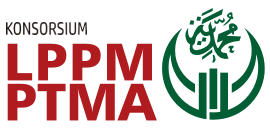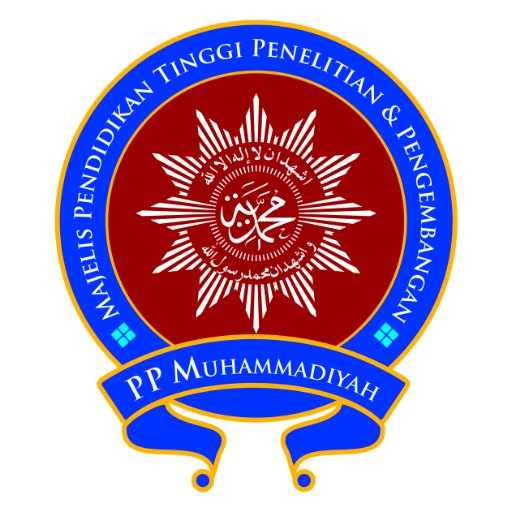Interferon-? Expression in Histopathological specimens with Invasive Breast Carcinoma of No Special Type at Menopause and Reproductive age
DOI:
https://doi.org/10.53017/ujhs.174Keywords:
Breast cancer, IFN-? Expression, Menopause, NST, Reproductive ageAbstract
Invasive breast carcinoma of No special type is the most common type of breast cancer with a prevalence of 50% to 80%. Breast cancer is an important threat in women of menopausal age, and only 5-7% are diagnosed under the age of 40 years. The most common risk factor for cancer is immune system disorders. There is a decrease sex hormone during menopause that results disruption of the body's immune system in the elderly. Women of reproductive age have elevated levels of T CD4+ and immunoglobulins in the circulation. Naïve CD4+ cells produce more IFN-?. IFN-? is a cytokine at innate and adaptive immunity that has proven important in antitumor immune response. Purpose: This study proves IFN-? expression in NST histopathology based on reproductive and menopause age. Method: Research is observational analytic with a cross sectional approach. NST parafin blocks specimens as many as 16 samples from the menopause age and 15 samples from the reproductive age. Then, the painting and examination of Immunohistochemistry IFN-?. Results: Fisher tests get a value of p = 0.5 at the age of menopause and the Mann Whitney test with a value of p = 0.823 at reproductive age. Conclusion: There is no association between menopausal age and reproductive age with IFN-? expression in the histopathology specimen of Invasive breast carcinoma of No special type patients. However, there was an increase in IFN-? expression in the specimen of reproductive age by 60%.
Downloads
References
S. Pilleron et al., “Global cancer incidence in older adults, 2012 and 2035: a population?based study,” International journal of cancer, vol. 144, no. 1, pp. 49–58, 2019.
M. Segovia-Mendoza and J. Morales-Montor, “Immune tumor microenvironment in breast cancer and the participation of estrogen and its receptors in cancer physiopathology,” Frontiers in immunology, vol. 10, p. 348, 2019.
J. Ferlay et al., “Estimating the global cancer incidence and mortality in 2018: GLOBOCAN sources and methods,” International journal of cancer, vol. 144, no. 8, pp. 1941–1953, 2019.
R. de A. Natal et al., “Exploring collagen parameters in pure special types of invasive breast cancer,” Scientific reports, vol. 9, no. 1, pp. 1–11, 2019.
Kemenkes, “Hari Kanker Sedunia 2019,” depkes.go.id, 2019. http://www.depkes.go.id/article/view/1 9020100003/hari-kanker-sedunia-2019.html (accessed Jul. 27, 2019).
American Cancer Society, Breast Cancer Facts & Figures 2017-2018. Atlanta: American Cancer Society, Inc, 2017.
WHO, WHO Classification of Tumours of the Breast, 4th Editio. Lyon: International Agency for Research on Cancer (IARC), 2012.
F. Sánchez-Jiménez, A. Pérez-Pérez, L. De la Cruz-Merino, and V. Sánchez-Margalet, “Obesity and breast cancer: role of leptin,” Frontiers in oncology, vol. 9, p. 596, 2019.
H. A. Azim and A. H. Partridge, “Biology of breast cancer in young women,” Breast cancer research, vol. 16, no. 4, pp. 1–9, 2014.
J. W. Honour, “Biochemistry of the menopause,” Annals of clinical biochemistry, vol. 55, no. 1, pp. 18–33, 2018.
M. Stakheyeva et al., “Integral characteristic of the immune system state predicts breast cancer outcome,” Exp Oncol, vol. 41, pp. 32–38, 2019.
C. N. Baxevanis, M. Sofopoulos, S. P. Fortis, and S. A. Perez, “The role of immune infiltrates as prognostic biomarkers in patients with breast cancer,” Cancer Immunology, Immunotherapy, vol. 68, no. 10, pp. 1671–1680, 2019.
Y. Prastyo, U. Sadhana, and D. Puspasari, “Gambaran Histopatologi Ekspresi Interferon Gamma (Ifn?) Pada Fibroadenoma Mammae (Fam) Dan Invasive No Special Type (Nst) Breast Carcinoma,” Biomedika, vol. 9, no. 2, 2018.
A. Elkhanany et al., “Abstract P4-06-05: PanCancer profiling reveals population difference in breast cancer immune microenvironment,” Cancer Research, vol. 79, no. 4_Supplement, pp. P4-06, 2019.
H. Al Ssadh and W. Al Abdulmonem, “Novel predication of protein biomarkers in interferon-gamma-stimulated breast cancer cells,” International Journal of Health Sciences, vol. 13, no. 2, p. 35, 2019.
H. S. Han et al., “Abstract P2-09-15: A phase I study of interferon-gamma (?) plus weekly paclitaxel, trastuzumab and pertuzumab in patients with HER-2 positive breast cancer,” Cancer Research, vol. 79, no. 4_Supplement, pp. P2-09, 2019.
L. Ni and J. Lu, “Interferon gamma in cancer immunotherapy,” Cancer medicine, vol. 7, no. 9, pp. 4509–4516, 2018.
C. A. Edechi, N. Ikeogu, J. E. Uzonna, and Y. Myal, “Regulation of immunity in breast cancer,” Cancers, vol. 11, no. 8, p. 1080, 2019.
P. D. O. Partini, I. W. Niryana, and P. A. T. Adiputra, “Karakteristik kanker payudara usia muda di Subbagian Bedah Onkologi Rumah Sakit Umum Pusat Sanglah tahun 2014-2016,” Intisari Sains Medis, vol. 9, no. 1, 2018.
M. Sihombing and A. N. Sapardin, “Faktor risiko tumor payudara pada perempuan umur 25-65 tahun di lima kelurahan kecamatan Bogor Tengah,” Indonesian Journal of Reproductive Health, vol. 5, no. 3, pp. 175–184, 2014.
C. Giefing?Kröll, P. Berger, G. Lepperdinger, and B. Grubeck?Loebenstein, “How sex and age affect immune responses, susceptibility to infections, and response to vaccination,” Aging cell, vol. 14, no. 3, pp. 309–321, 2015.
D. Tiara, M. Tiho, and Y. M. Mewo, “Gambaran kadar limfosit pada pekerja bangunan,” e-Biomedik, vol. 4, no. 2, 2016.
Y. E. Prasetyo, U. Bahrun, and R. D. N. Pakasi, “Neutrofil/Lymphocyte Ratio in Carcinoma Mammae,” Indonesian Journal of Clinical Pathology and Medical Laboratory, vol. 21, no. 2, pp. 125–129, 2015.
B. Hartono, V. S. Pontoh, and M. A. Merung, “Penilaian jumlah neutrofil, limfosit dan trombosit, kadar protein reaktif C, kadar albumin, rasio neutrofil limfosit, serta rasio trombosit limfosit sebelum dan setelah terapi pada penderita karsinoma payudara,” Jurnal Biomedik: JBM, vol. 7, no. 3, 2015.
G. Hall and A. C. Guyton, “Buku ajar fisiologi kedokteran,” Keduabelas. Ermita Isfandiary, Dr. dr. MA, Dkk., editors. Singapura: Elsevier Ltd, 2014.
A. Kumar, A. K. Abbas, and C. Jon, “Aster: Robbins and Cotran pathologic basis of disease,” Professional Edition, 2015.
N. M. Y. Wetan, “Perbedaan Karakteristik Pasien Kanker Payudara Stadium Dini Dengan dan Tanpa Metastasis Kelenjar Getah Bening Aksila di RSUP Sanglah Denpasar,” JBN (Jurnal Bedah Nasional), vol. 3, no. 1, pp. 11–15, 2019.
R. A. Lubis, E. Efrida, and D. Elvira, “Perbedaan jumlah leukosit pada pasien kanker payudara pasca bedah sebelum dan Sesudah radioterapi,” Jurnal Kesehatan Andalas, vol. 6, no. 2, pp. 276–282, 2017.
F. M. Alkabban and T. Ferguson, “Cancer, Breast,” ncbi.nlm.nih.gov, 2019. https://www.ncbi.nlm.nih.gov/books/N BK482286.
H. S. Kusuma and Y. Kholifatudin, “Gambaran Kadar Albumin, Limfosit, Asupan Protein dan Vitamin A pada Pasien Kanker Payudara,” in PROSIDING SEMINAR NASIONAL & INTERNASIONAL, 2016, vol. 1, no. 1.
S. Libard, D. Cerjan, and I. Alafuzoff, “Characteristics of the tissue section that influence the staining outcome in immunohistochemistry,” Histochemistry and Cell Biology, vol. 151, no. 1, pp. 91–96, 2019.
I. García-Tuñón, M. Ricote, A. Ruiz A, B. Fraile, R. Paniagua, and M. Royuela, “Influence of IFN-gamma and its receptors in human breast cancer,” BMC cancer, vol. 7, no. 1, pp. 1–11, 2007.
H. Yaghoobi, H. Azizi, V. K. Oskooei, M. Taheri, and S. Ghafouri-Fard, “Assessment of expression of interferon ? (IFN-G) gene and its antisense (IFNG-AS1) in breast cancer,” World journal of surgical oncology, vol. 16, no. 1, pp. 1–7, 2018.
M. R. Zaidi, “The interferon-gamma paradox in cancer,” Journal of Interferon & Cytokine Research, vol. 39, no. 1, pp. 30–38, 2019.
S. Patel, A. Homaei, A. B. Raju, and B. R. Meher, “Estrogen: the necessary evil for human health, and ways to tame it,” Biomedicine & Pharmacotherapy, vol. 102, pp. 403–411, 2018.
H. Zhao, L. Zhou, A. J. Shangguan, and S. E. Bulun, “Aromatase expression and regulation in breast and endometrial cancer,” Journal of molecular endocrinology, vol. 57, no. 1, p. R19, 2016.
K. G. Baratawidjaja and I. Rengganis, Imunologi Dasar. Jakarta: Badan Penerbit FKUI, 2014.
C. Kim, S. D. Harlow, H. Zheng, D. S. McConnell, and J. F. Randolph, “Changes in androstenedione, dehydroepiandrosterone, testosterone, estradiol, and estrone over the menopausal transition,” Women’s midlife health, vol. 3, no. 1, pp. 1–9, 2017.
I. Nassiri, A. Inga, E. M. Meškyt?, F. Alessandrini, Y. Ciribilli, and C. Priami, “Regulatory crosstalk of doxorubicin, estradiol and TNF? combined treatment in breast cancer-derived cell lines,” Scientific reports, vol. 9, no. 1, pp. 1–11, 2019.
M. Iizuka, T. Susa, M. Tamamori-Adachi, H. Okinaga, and T. Okazaki, “Intrinsic ubiquitin E3 ligase activity of histone acetyltransferase Hbo1 for estrogen receptor ?,” Proceedings of the Japan Academy, Series B, vol. 93, no. 7, pp. 498–510, 2017.
S. K. Bardaweel, A. A. Akour, S. Al-Muhaissen, H. A. AlSalamat, and K. Ammar, “Oral contraceptive and breast cancer: do benefits outweigh the risks? A case–control study from Jordan,” BMC women’s health, vol. 19, no. 1, pp. 1–7, 2019.
N. Ermi and S. Kamso, “Correlation Between Hormonal Contraceptives Use and Age of Menarche with Breast Cancer Among Women in Indonesia: A Systematic Review,” KnE Life Sciences, pp. 92–101, 2018.
S. A. Agustina and L. Barokah, “Correlation between Obesity and Contraceptive Method on Estrogen and Progesterone Receptors and Human Epidermal Growth Factor Receptor–2 Expression among Breast Cancer Patients in Dr. Moewardi Hospital, Surakarta,” Indonesian Journal of Medicine, vol. 4, no. 3, pp. 259–265, 2019.
N. M. Niehoff, H. B. Nichols, S. Zhao, A. J. White, and D. P. Sandler, “Adult physical activity and breast cancer risk in women with a family history of breast cancer,” Cancer Epidemiology, Biomarkers & Prevention, vol. 28, no. 1, pp. 51–58, 2019.
K. Liu et al., “Association between body mass index and breast cancer risk: Evidence based on a dose–response meta-analysis,” Cancer management and research, vol. 10, p. 143, 2018.
Downloads
Published
How to Cite
Issue
Section
License
Copyright (c) 2022 Yuni Prastyo Kurniati, Syafira Anggraini Khusna, Elisna Dwi Anggraeni

This work is licensed under a Creative Commons Attribution-NonCommercial 4.0 International License.





